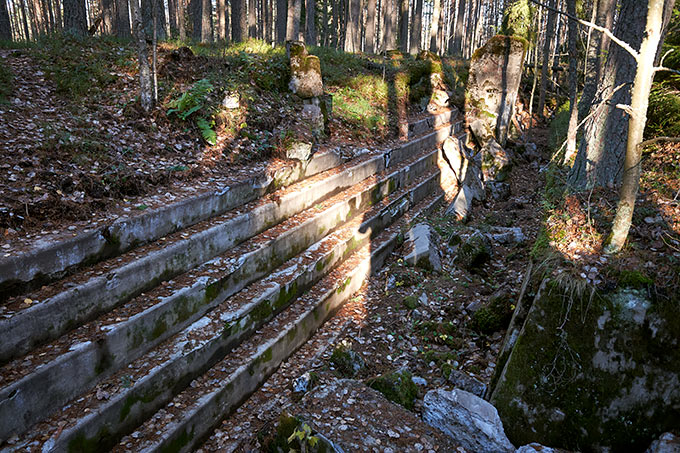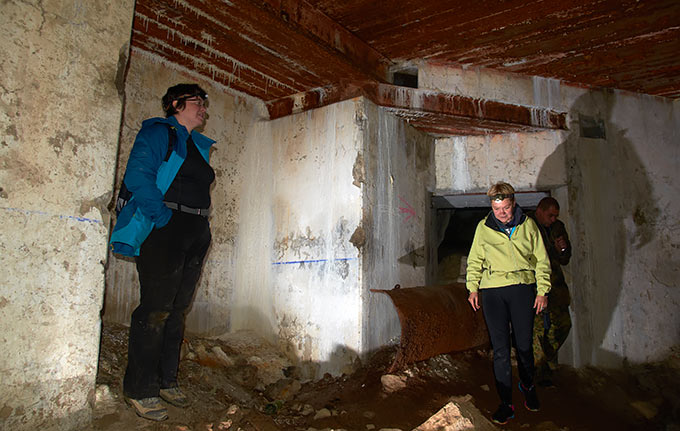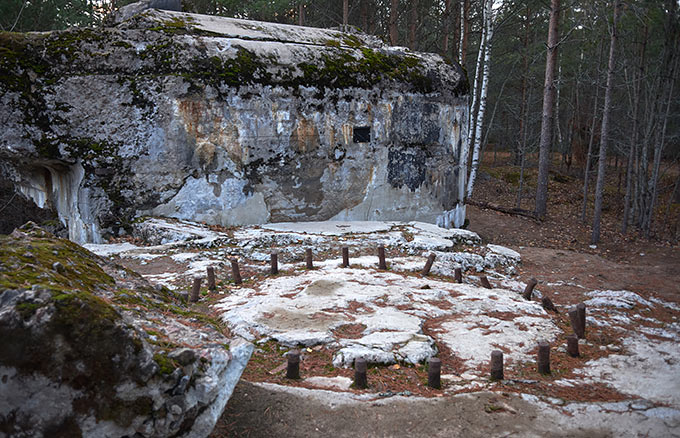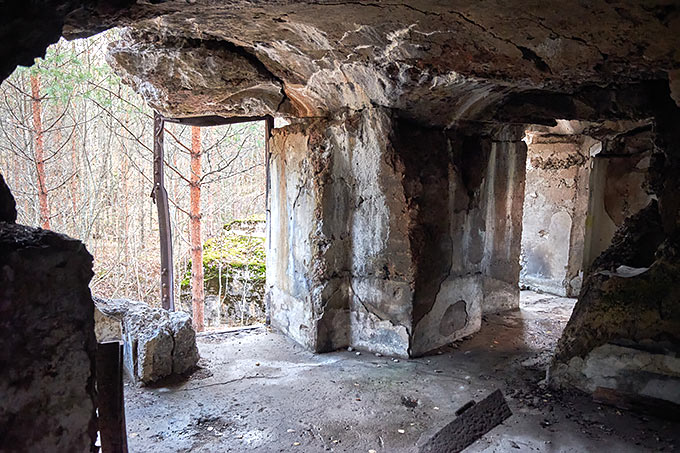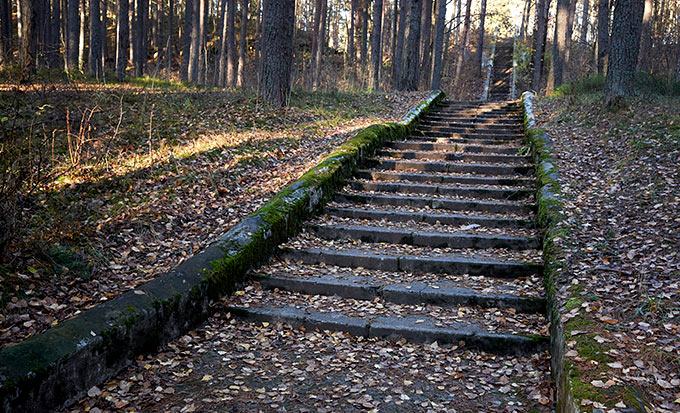History of the Fort Ino
Fort Ino (Nikolaevsky) was constructed in 1909-16 for protection of the entrance to the Gulf of Finland together with the coastal batteries of Krasnaja Gorka (Red Hill), Seraja Loshad (Grey Horse) and forts of Kronshtadt fortress.
There were 2 batteries with 4 152-mm Kanet guns, 2 batteries with 8 254-mm guns and 8 279-mm howitzers. Maximum range of fire near to 18 km had 254-mm guns. The big underground town surrounded the artillery positions. There were powder cellars, soldiers barracks and shelters, command and observations posts, a railway for delivery of ammunition for the guns. All of this were covered by 2 meter thickness concrete roof for protection from large-caliber naval guns up to 12" caliber.
The fort was surrounded by line of land defense with concrete strong points, concrete shelters for anti-assault guns and infantry positions for providing of circular defenses.
The two batteries of 8 305-mm guns begun to build in the fort in 1912. One of them had the open gun's positions with 2-meter high concrete breastworks and another had a turret construction same as ship's guns. Turret battery was (and is still) an enormous concrete construction with two gun's turrets. There were the casemates, powder cellars, shelters and special underground railway for delivering shells to the guns. It had a steam-and-water heating and the water pipes are still can be seen there, though all heater and radiators has been stolen. The construction of both batteries was finished in 1916.
Fort Ino has not taken part in war actions. In 1918 Finland was recognized as an independent state and Karelian Isthmus became part of it. On May, 14, 1918 by order of SOVNARCOM turret battery and other military installations of fort Ino were undermined by garrison, gun's locks and some military equipment were evacuated to Kronshtadt and the fort was seized by Finns. Finns were obliged to destroy all the rest of installations of fort Ino under the conditions of Tartu peace treaty of 1921. So, they did it very well.
Despite of destruction there were many useful things for young Finnish state on the forts such as guns barrels, artillery and electric equipment and so forth. Also, there were considerable stock of excellent Armour-plates which later were used for construction of machine-gun bunkers for famous Mannerheim Line.
After the Winter War of 1939-40-th special Soviet Artillery Commission examined the Fort Ino and made conclusion that its reconstruction will be beside the purpose. After WWII there was a military-restricted zone for the long time. In 1990-th military units begun to abandon fort territory and nowadays, it is accessible for exploration in it's some parts.
Impression
It is a pity, that all of this so thoroughly has blown up. It is a pity a huge amount of money that were spent for construction of the fort. Now it is standing as a monument of futility of efforts and senselessness of aspirations. It will be dug out in 200 or more years and will be turned into the historical attraction like Pompeii.
The majestic ruins of turret 305-mm guns battery are struck by it gloomy appearance. It is a huge concrete construction of two (or three?) floors, measuring near to 300 x 80 meters. The vigorous explosions have torn narrow strips of concrete of the walls out, has risen and thrown concrete roof of 2-meter thickness. There is a surrealistic labyrinth of distorted ceilings, half strewn passages and corridors and casemates inside it (there are the quite unrestricted premises also).
The positive impressions is that I have found it in despite of lack of information; also there were the excellent and absolutely deserted beach with clean water and enormous masses of wild strawberry.
Land forts and fortress:
Bip Castle Gatchina Ivangorod Izborsk Kexholm Kirillov Monastery Koporye Novgorod Pechorskiy Monastery Peter&Paul Fortress Porkhov Pskov Schlisselburg Staraya Ladoga Tikhvin Vyborg Hameenlinna Hamina Kastelholm Kymenlinna Lappaenranta Raseborg Castle Savonlinna Tavetti Turku Visby Fredrikstadt Fredriksten Hegra Fort Hoytorp Fort Arensburg Narva Tallinn Antipatris Caesarea Jerusalem Latrun Fort Masada
Sea forts and fortresses:
Alexander Fort Ino Fort Krasnaya Gorka Fort Kronstadt: Kotlin isl. Kronstadt: North Forts Kronstadt: South Forts Trongsund Hanko Svartholm Sveaborg Marstrand Siaro Fort Vaxholm Oscarsborg
Artillery batteries and individual guns:
Coastal Artillery Hemso Fort
Fortified areas and defensive lines:
Karelian Fortified Area (KaUR) KrUR Leningrad Mannerheim Line Nevsky Bridgehead VT Line Harparskog Line Salpa Line Gothland
Russian
S e a r c h All news


